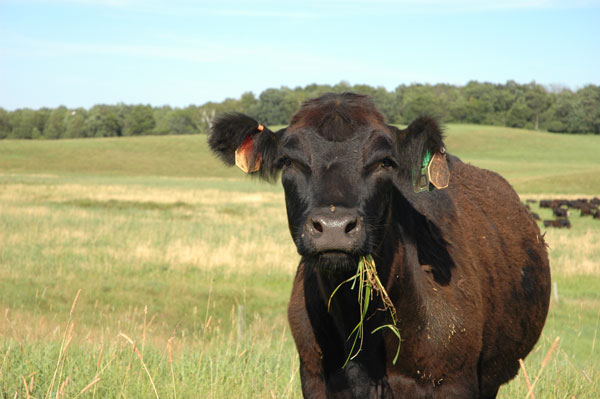Management considerations for new replacement heifers
An important part in sorting the wrong kind from the right kind is how heifers are managed from weaning to breeding.
October 23, 2019

This is the second part of BEEF’s 2-part series on selecting and managing replacement heifers. In Part 1, we looked at getting started in the selection process. Part 2 looks at management considerations once you have chosen your replacements.
Selecting replacement females is important for long-term sustainability and productivity of your cow herd. The wrong kind of females won’t generate as much cash flow and may cost more than you can afford in additional inputs.
An important part in sorting the wrong kind from the right kind is how heifers are managed from weaning to breeding. When done correctly, it can be part of the selection process, to make sure you end up with heifers that can do the best job.
Management considerations
Traditional recommendation has been to have heifers reach 65% of their eventual mature body weight by time of breeding. This is why many producers confine heifers after weaning and push them to gain more than they would on winter pastures.
However, that idea is changing. The genetics of many herds have changed; some producers have selected for more efficient animals that do well without grain, needing less expensive inputs for growth and production.
The idea is to raise heifers on pasture, feeding hay and supplement if needed. The thought is that unconfined heifers stay fitter, healthier and make better cows, even though they don’t grow as fast as intensively fed heifers.
There has been research on this; there was concern that puberty would be delayed if heifers were raised with lower rate of gain and lower percent of mature body weight at breeding. Studies have looked at developing heifers to 60% or maybe 55% of mature weight.
Success depends on genetics. British breeds are generally a better fit for this lower percent body weight at breeding than some of the Continental breeds. Ranchers can develop cattle that fit their ranch environment and thrive on grazing resources the ranch provides, without expensive inputs during the 200 days from weaning until breeding.
One study looked at two rates of gain for developing heifers—moderate versus high, and an extensive grazing program versus a drylot feeding program—with four groups of heifers: moderate gain in extensive grazing, high gain in extensive grazing, moderate gain in drylot and high gain drylot.
The goal was to expose some replacement heifers to a system they would be managed in for longevity—an extensive system where they go find feed versus having it brought to them in a bunk or pen. They had to graze, winter well and then cycle during the breeding season and give the producer a calf.
The study looked at moderate versus high rate of gain and followed the heifers to their third calf. During the development program after weaning, the moderate-gain group gained about 1.2 pounds per day. The high-gain group averaged a little over 1.5 pounds per day.
At weaning, they were all about 565 pounds. The heifers with moderate gains weighed about 780 pounds just before breeding, and the high gain group weighed about 870 pounds. A few lighter-weight heifers had not reached puberty coming out of winter, but they did reach puberty during breeding season, started cycling, and did become pregnant. If pasture quality is adequate, they do catch up.
Smith Thomas is a rancher and freelance writer based in Salmon, Idaho.
About the Author(s)
You May Also Like


.png?width=300&auto=webp&quality=80&disable=upscale)
